Excertos do catálogo
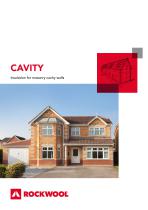
CAVITY Insulation for masonry cavity walls
Abrir o catálogo na página 1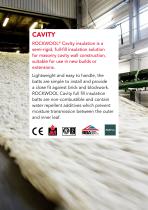
CAVITY ROCKWOOL® Cavity insulation is a semi-rigid, full-fill insulation solution for masonry cavity wall construction, suitable for use in new builds or extensions. Lightweight and easy to handle, the batts are simple to install and provide a close fit against brick and blockwork. ROCKWOOL Cavity full fill insulation batts are non-combustible and contain water repellent additives which prevent moisture transmission between the outer and inner leaf.
Abrir o catálogo na página 2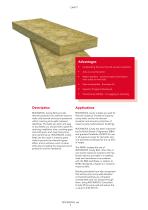
Advantages • Outstanding thermal, fire and acoustic insulation • Acts as a cavity barrier • Water repellent - prevents water transmission from outer to inner leaf Superior fit against blockwork Dimensional stability - no sagging or slumping Description ROCKWOOL Cavity Batts provide thermal protection for external masonry walls, and thermal and sound protection within masonry party walls, between dwellings. The batts are quick and easy to accurately cut, and provide a great fit; reducing installation time, avoiding gaps and cold spots, and maximising long term performance. ROCKWOOL Cavity...
Abrir o catálogo na página 3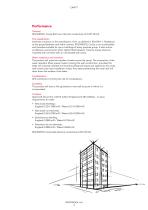
Performance Thermal ROCKWOOL Cavity Batt has a thermal conductivity of 0.037 W/mK. Fire classification Achieves a reaction to fire classification of A1, as defined in EN13501-1. Resistance to fire spread between and within cavities. ROCKWOOL Cavity is non-combustible and therefore suitable for use in buildings of every purpose group. It also acts as an effective cavity barrier when tightly fitted between masonry leaves where an insulated wall connects with an uninsulated wall cavity. Water resistance and moisture The product will resist the transfer of water across the cavity. The...
Abrir o catálogo na página 4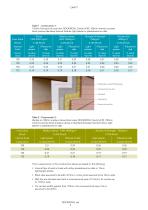
Table 1 - Construction 1: 102mm Facing brick outer skin, ROCKWOOL Cavity full fill, 100mm internal concrete block (various densities) Internal finishes: light plaster or plasterboard on dab. Table 2 - Construction 2: Render on 100mm medium dense block outer, ROCKWOOL Cavity full fill, 100mm internal concrete block (medium dense or Standard Aircrete) Internal finishes: light plaster or plasterboard on dab. Inner block W/mK Internal finish Cavity (mm) Medium dense - 1400-1450kg/m3 0.470 W/mK Light plaster P/board on dab Aircrete Hi Strength - 750kg/m3 0.190 W/mK Light plaster P/board on dab...
Abrir o catálogo na página 5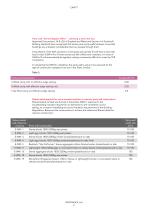
Party wall “thermal bypass effect” - achieving a zero heat loss Approved Documents L1A & L2A of England and Wales and Section 6 of Scotland’s Building standards have recognised that where party cavity-walls between connected buildings are untreated, considerable heat can escape through them. A key feature of the SAP calculation is that party wall cavities should have a zero heat loss (U-value 0.0W/m2K). If these cavities are left unfilled and unsealed, a U-value of 0.5W/m2K will automatically be applied, making it extremely difficult to meet the TER compliance. In calculating the DER for a...
Abrir o catálogo na página 6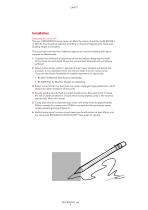
Installation Designing the cavity wall The use of ROCKWOOL Cavity does not affect the choice of wall ties to BS EN 845-1 or DD140. Ties should be selected according to structural requirements, cavity size, building height and location. The outer leaf is the first line of defence against rain and the following will help to improve its effectiveness: 1. Consider the dimensional tolerances of the wall before designing the width of the cavity. An extra 5mm above the nominal batt thickness will normally be sufficient. 2. Select porous bricks, which in periods of brief, heavy showers will absorb...
Abrir o catálogo na página 7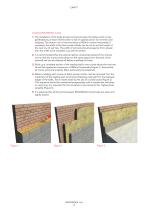
Installing ROCKWOOL Cavity 1. The installation of the batts should commence below the damp proof course (preferably by at least 150mm) with no risk of capillary action to minimise cold bridging. The bottom row of ties should be at 450mm centres horizontally. If necessary, the width of the first course of batts can be cut to suit the height of the next row of wall ties. The width of cut batts should always be 5mm greater than the width to be insulated, e.g. wall tie centres. 2. It is recommended that the external leaf be constructed ahead of the internal one so that any mortar protruding...
Abrir o catálogo na página 8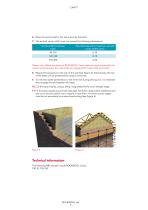
6. Raise the second leaf to the same level as the batts. 7. The as-built cavity width must not exceed the following dimensions: Nominal Batt thickness (mm) Permitted deviation maximum as built cavity widths (mm) Please note: Where two layers of ROCKWOOL Cavity batts are used, ensure that the vertical joints between the outer batts are staggered to those of the inner batts. 8. Repeat this sequence to the top of the wall (see Figure 5). Alternatively, the top of the batts can be protected by using a cavity tray. 9. To minimise water penetration to the inner leaf during driving rain, it is...
Abrir o catálogo na página 9
Fire resistance Acoustic comfort Sustainable materials Durability As an environmentally conscious company, ROCKWOOL promotes the sustainable production and use of insulation and is committed to a continuous process of environmental improvement. All ROCKWOOL products provide outstanding thermal protection as well as four added benefits: Health & Safety The safety of ROCKWOOL stone wool is confirmed by current UK and Republic of Ireland health & safety regulations and EU directive 97/69/EC:ROCKWOOL fibres are not classified as a possible human carcinogen. A Material Safety Data Sheet is...
Abrir o catálogo na página 10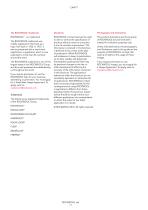
The ROCKWOOL Trademark ROCKWOOL® - our trademark The ROCKWOOL trademark was initially registered in Denmark as a logo mark back in 1936. In 1937, it was accompanied with a word mark registration; a registration which is now extended to more than 60 countries around the word. The ROCKWOOL trademark is one of the largest assets in the ROCKWOOL Group, and thus well protected and defended by us throughout the world. If you require permission to use the ROCKWOOL logo for your business, advertising or promotion. You must apply for a Trade Mark Usage Agreement. To apply, write to:...
Abrir o catálogo na página 11
September 2018 ROCKWOOL Limited Pencoed Bridgend CF35 6NY
Abrir o catálogo na página 12Todos os catálogos e folhetos técnicos da ROXUL
-
TCB & PWCB CAVITY BARRIERS
6 Páginas
-
FirePro® SP FireStop OSCB
7 Páginas
-
CLADDING ROLL
4 Páginas
-
HARDROCK® MULTI-FIX (DD)
18 Páginas
-
High-rise buildings
11 Páginas
-
ROCKWOOL® FIREPRO®
109 Páginas
-
ROCKBOARD® 40/60/80
6 Páginas
-
ROLL,TWINROLL AND ROLLBATT
8 Páginas
-
TAPERED ROOFING
8 Páginas
-
EWI SYSTEM HOLDERS
8 Páginas
-
ROCKCLOSE®
8 Páginas
-
Commercial Applications
76 Páginas
-
FABROCK™ Batt
2 Páginas
-
FABROCK™ HD
2 Páginas
-
MULTIFIX™
2 Páginas
-
ROCKWOOL PLUS™ MB
2 Páginas
-
SAFE'n'SOUND®
2 Páginas
-
TOPROCK DD®
12 Páginas
-
ProRox Pipe products
12 Páginas
-
Fabricated Industrial Solutions
6 Páginas
-
CONROCK®
6 Páginas
-
FABROCK™
6 Páginas
-
COMFORTBOARD FS
1 Páginas
-
Core Solutions
6 Páginas
-
CIS
4 Páginas
-
COMFORTBATT Steel Stud
4 Páginas
-
ROXUL SAFE & CURTAINROCK
8 Páginas
-
ROCKBOARD® PG
4 Páginas
-
ROCKBOARD®
8 Páginas
-
FIREWALL & ROXUL Plus
8 Páginas
-
DrainBoard
8 Páginas
-
ROXUL AFB®
12 Páginas
-
RockFill Brochure
4 Páginas
-
propox pipe products catalogue
12 Páginas
-
Prorox board products catalogue
12 Páginas
-
Core Solutions Brochure
6 Páginas
-
Not All Party Walls Are Built Equal
4 Páginas
-
Roxul COMFORTBATT
8 Páginas
-
ROXUL AFB ® Acoustical Fire Batts
12 Páginas

















































